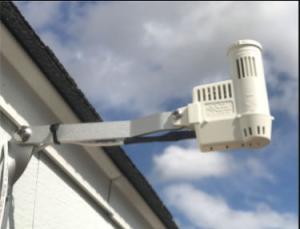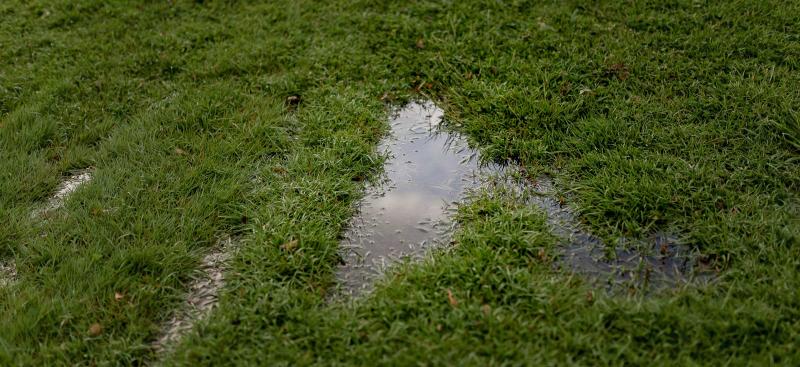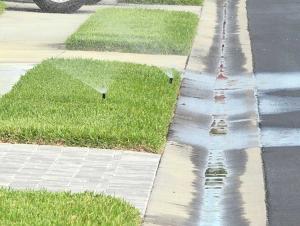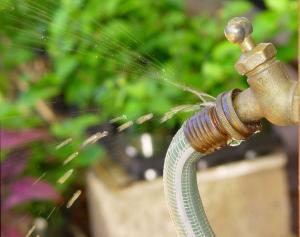Regular irrigation maintenance is important to reduce water waste and help create a healthy environment for your landscape.
Look for Broken or Misdirected Sprinkler Heads
Sprinkler heads can accidently be knocked during lawn maintenance or from a passerby. Look for these signs of a broken or misdirected sprinkler head.
- Water is shooting into the air or not spraying correctly.
- Water is pooling around the base of a sprinkler head.
- Water is spraying onto the driveway, sidewalk, or road instead of your lawn.
Check for Leaks
A small outdoor leak can waste 300 or more gallons of water a month. Check these locations for common outdoor leaks:
- Sprinkler Heads – Look for water that may be pooling around the base of your sprinkler or spray heads. This indicates a loose seal on your sprinkler.
- Outdoor Spigots – Look for excess water dripping from outdoor spigots or hose connections. Simply tighten the connection or use plumber’s tape to fix the leak.
- Underground Piping – Look for buildup of water on your lawn or low pressure in particular areas when running your irrigation. This can indicate a possible broken or loose pipe underground.
Check Your Rain Shut-Off Device

Florida law requires properties with an automatic sprinkler system to have a working rain shut-off device. A rain shut-off device, most commonly a rain sensor, overrides the irrigation system when enough rain has fallen to prevent overwatering. Check to make sure your rain shut-off device is working properly and that the corresponding switch on the irrigation controller is set to “on.”
Make Seasonal Adjustments
Make seasonal adjustments to account for changes in temperature and rainfall.
- Skip a week of irrigation in the cooler winter months of December through February when plant growth is limited and less water is needed. Turn your irrigation controller to the off position and turn it back on only when your lawn shows signs of stress or once every 10-14 days. Signs of stress include grass blades that do not spring back and leave footprints, appear blue-gray, or are folded in half lengthwise.
- Watch the weather and wait to water your lawn during the rainy season to account for natural rainfall. Turn your controller to the off position and turn it back on only when needed. If you have an automatic irrigation system, make sure your rain shut-off device is working properly.
Learn more about irrigation maintenance by watching the video below.



